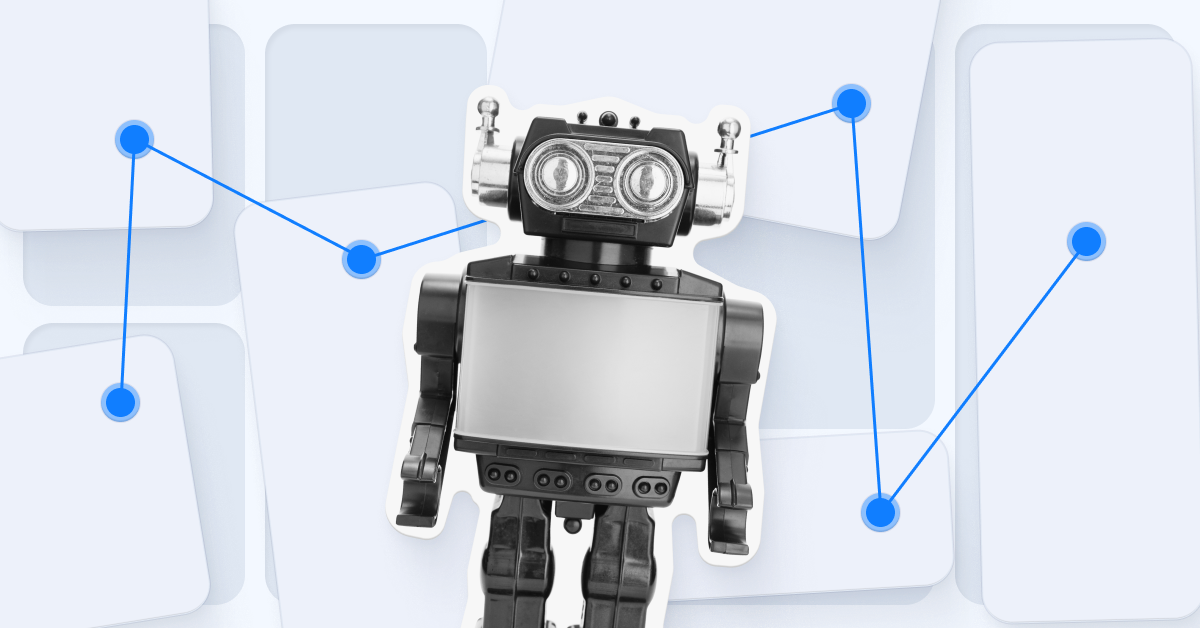The stakes for capturing a user's attention on a landing page have never been higher.
With the average internet user bombarded by countless pieces of content daily, making a memorable first impression is crucial.
This is where the power of a well-designed landing page comes into play, acting as the forefront of a brand's digital persona.
The emergence of Artificial Intelligence in the realm of design, coupled with the indispensability of responsive design in our mobile-first world, is revolutionizing how landing pages are crafted.
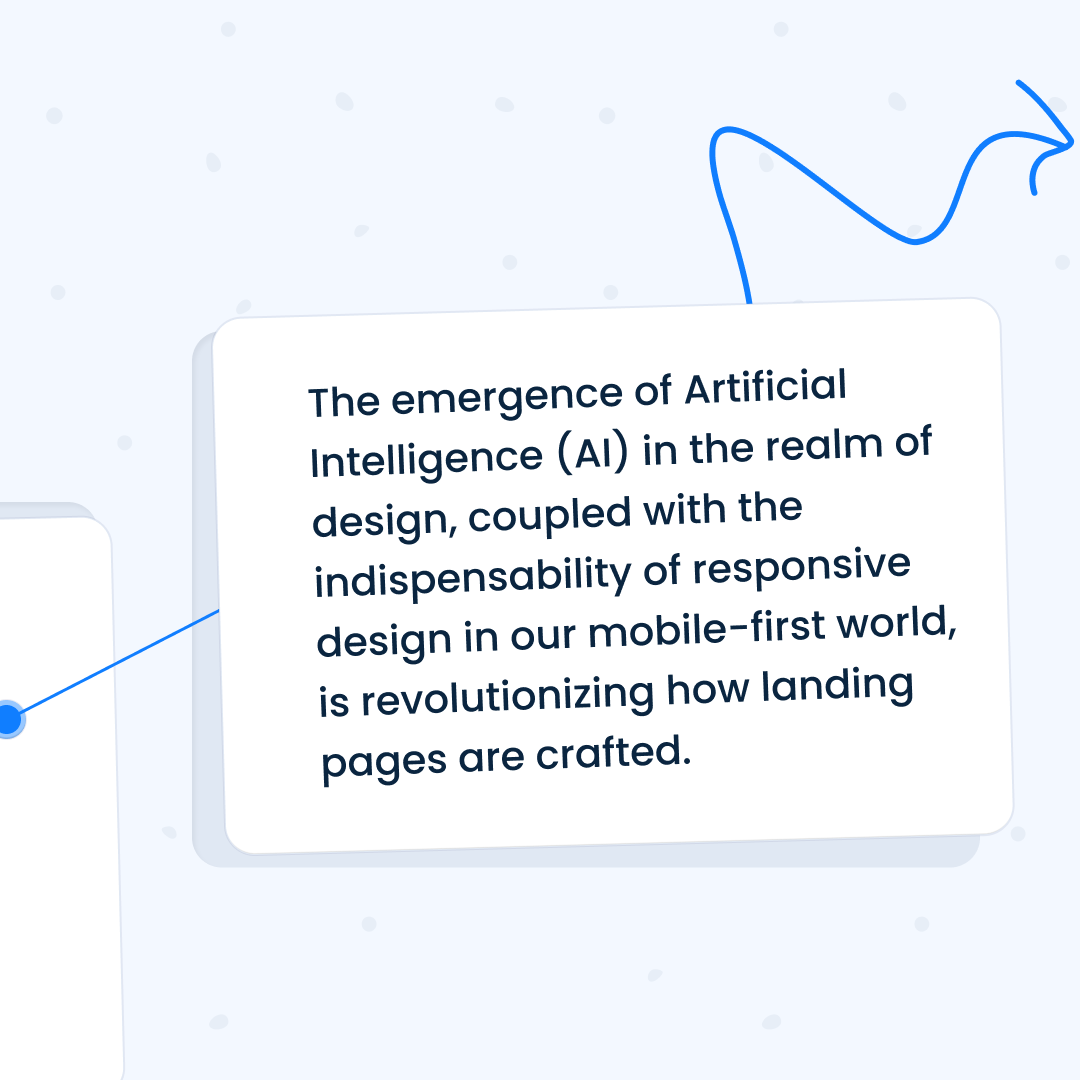
Bridging Design and Functionality Through AI
The integration of AI in landing page design is not just a trend but a groundbreaking shift towards more dynamic, engaging, and user-centric pages.
That's key.
You see, AI's ability to analyze vast amounts of data and predict user preferences allows designers to create pages that are not only visually appealing but also highly personalized and effective.
This means that landing pages can now adapt in real-time, offering content and design elements tailored to the needs and behaviors of individual users.
The result?
A significant increase in engagement and conversion rates, powered by designs that resonate more profoundly with the audience.
Responsive Design: A Non-Negotiable Element
As smartphone usage continues to soar, responsive design has moved from being an option to an absolute necessity.
A landing page must look and function flawlessly across all devices, adapting its layout, content, and design elements to provide an optimal viewing experience regardless of screen size.
This approach ensures that every visitor has access to a seamless user experience, vastly improving the chances of engagement and conversion.
Responsive design not only meets the technical demands of today's diverse device landscape but also reflects a brand's commitment to accessibility and user satisfaction.
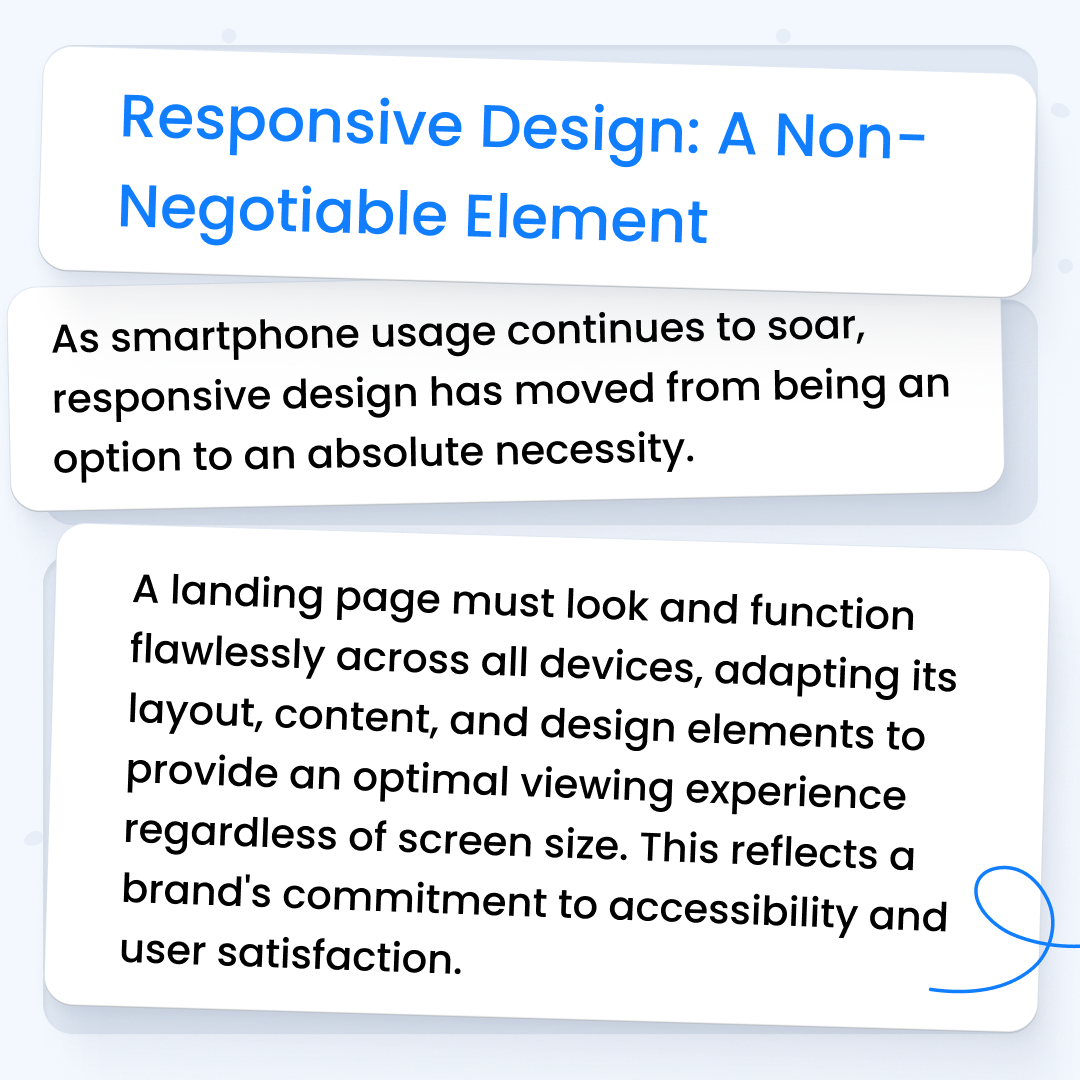
The Synergy of AI and Responsive Design
The real magic happens when AI's predictive capabilities and adaptability merge with responsive design's fluidity.
Imagine a landing page that not only automatically adjusts its layout for any device but also changes its content and visual elements based on the user's behavior and preferences.
This synergy allows for amazing levels of personalization and user engagement, setting a new standard for what landing pages can achieve.
The Importance of Landing Page Design
Your landing page copy is vital.
And, yes, it's the most crucial element.
(Even our designer admits that!)
Yet behind every successful landing page is a design that speaks directly to its audience.
Just as a meticulously designed storefront invites passersby to enter, a landing page's design plays a pivotal role in drawing visitors in.
Ultimately, the aesthetics, usability, and overall experience of a landing page can make or break a user's decision to engage further with a brand.
Look at it like this:
It's the design that makes the first impression, setting the tone for the user's journey and ultimately influencing their perception of the brand.
Why Design Matters (almost) As Much As Copy
Okay, listen:
Your landing page can look incredible.
Like an absolute work of art.
But here's the thing:
If your messaging is off, it's not going to convert.
Period.
Yet it is still possible to produce a landing page that converts with excellent copy yet very amateur design.
Though even though it's possible, it's far from ideal.
You ultimately want to aim for world-class copy and world-class design.
After all, the design is what frames and enhances that copy, making it accessible and appealing to the user.
Plus, a well-designed landing page uses visual elements not just for decoration but as tools to guide the user's journey, highlight key information, and provoke the desired actions.
It's about creating a balance between form and function, where design elements complement the copy, making the message more impactful.
The Visual Appeal: Your First Interaction
Here's how we look at it:
Consider the landing page as the digital equivalent of a first handshake.
It's your initial interaction with a potential customer.
A visually appealing design, optimized for usability and engagement, can turn a casual visitor into a lead, and eventually, a customer.
The design's role in this process is to ensure that first interaction is positive, memorable, and inviting.
In essence, before a word of copy is read, the design has already begun the conversation, setting the stage for what's to come.
As time goes on, we feel as though the integration of AI and responsive design in landing pages will become even more crucial than it already is.
So if you're not focusing on both, you're missing out.
This dynamic duo not only elevates the aesthetic appeal and functionality of landing pages but also opens up new possibilities for personalization and user engagement.
In a world where first impressions are everything, the fusion of AI and responsive design ensures that your landing page not only captures attention but also captivates hearts and minds.
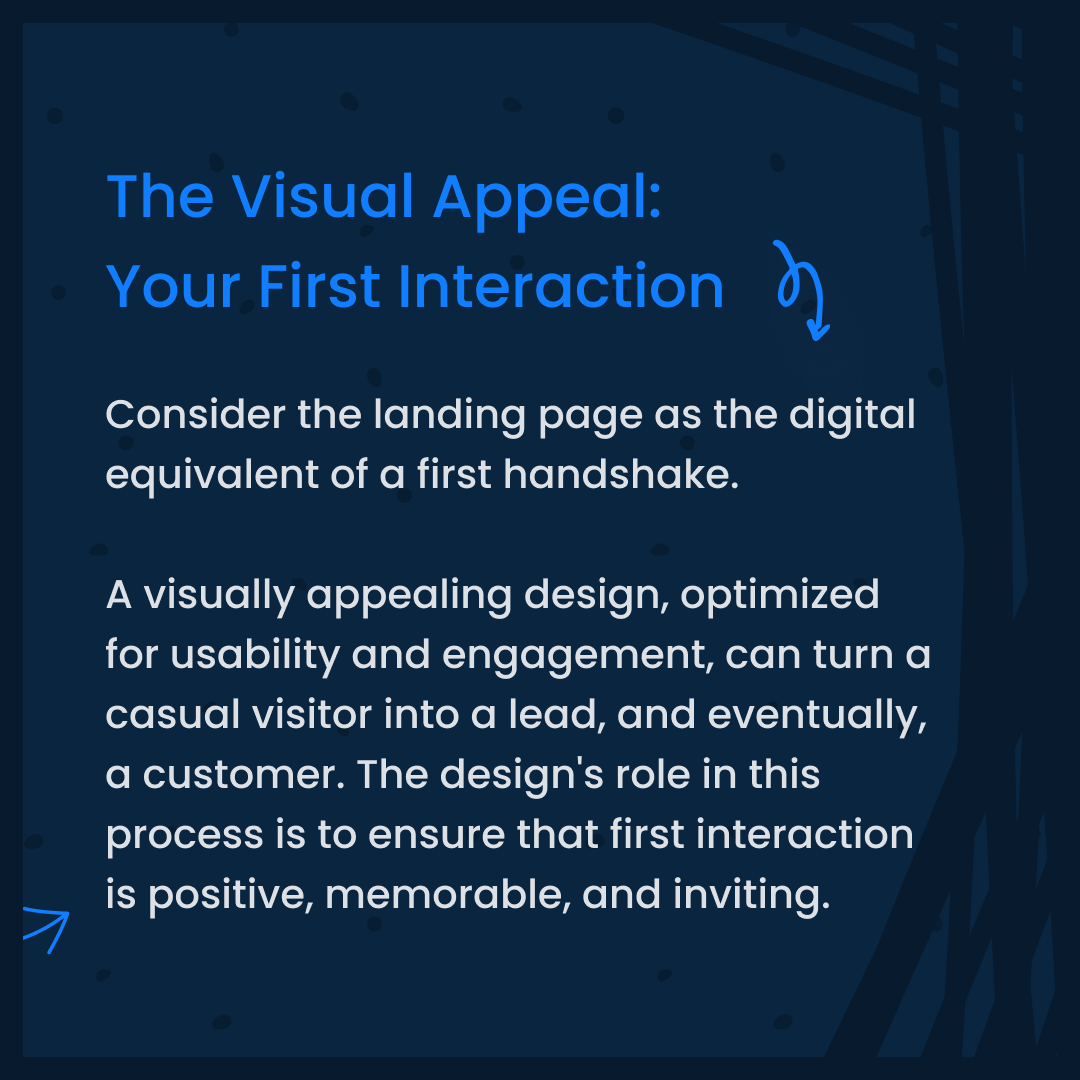
Elevating Landing Page Effectiveness: Key Strategies and the Importance of Consistency
We've spoken about design...
We've spoken about copy...
Yet creating a landing page that stands out in the crowded digital space requires more than just eye-catching visuals and persuasive copy.
It demands a strategic approach that marries aesthetics with functionality, ensuring that every element serves a purpose.
Two pivotal aspects of this approach are the organization of content to prioritize crucial information and the unwavering consistency across all design elements.
Prioritizing Content: The Importance of "Above the Fold"
The concept of "above the fold" harks back to the newspaper era, referring to the content visible on the upper half of the front page when folded.
In the digital realm, it translates to the content visible without scrolling.
Keeping key information "above the fold" ensures that visitors immediately grasp what you offer and what action you want them to take.
This could range from a compelling headline, an eye-catching image, to a succinct call-to-action (CTA).
Given the mere seconds you have to capture a visitor's interest, the strategic placement of these elements can dramatically increase the likelihood of engagement and conversion.
Embracing Responsive Design: A Mobile-First Approach
In an era where mobile internet usage surpasses desktop, responsive design is not just important—it's essential.
A landing page must look impeccable and function flawlessly across all devices, from the largest desktop screens to the smallest smartphones.
This necessitates a design that adapts seamlessly to different screen sizes, ensuring a consistent user experience everywhere.
Taking a mobile-first approach to landing page design is more than just a strategic advantage...
...it's a reflection of user behavior trends.
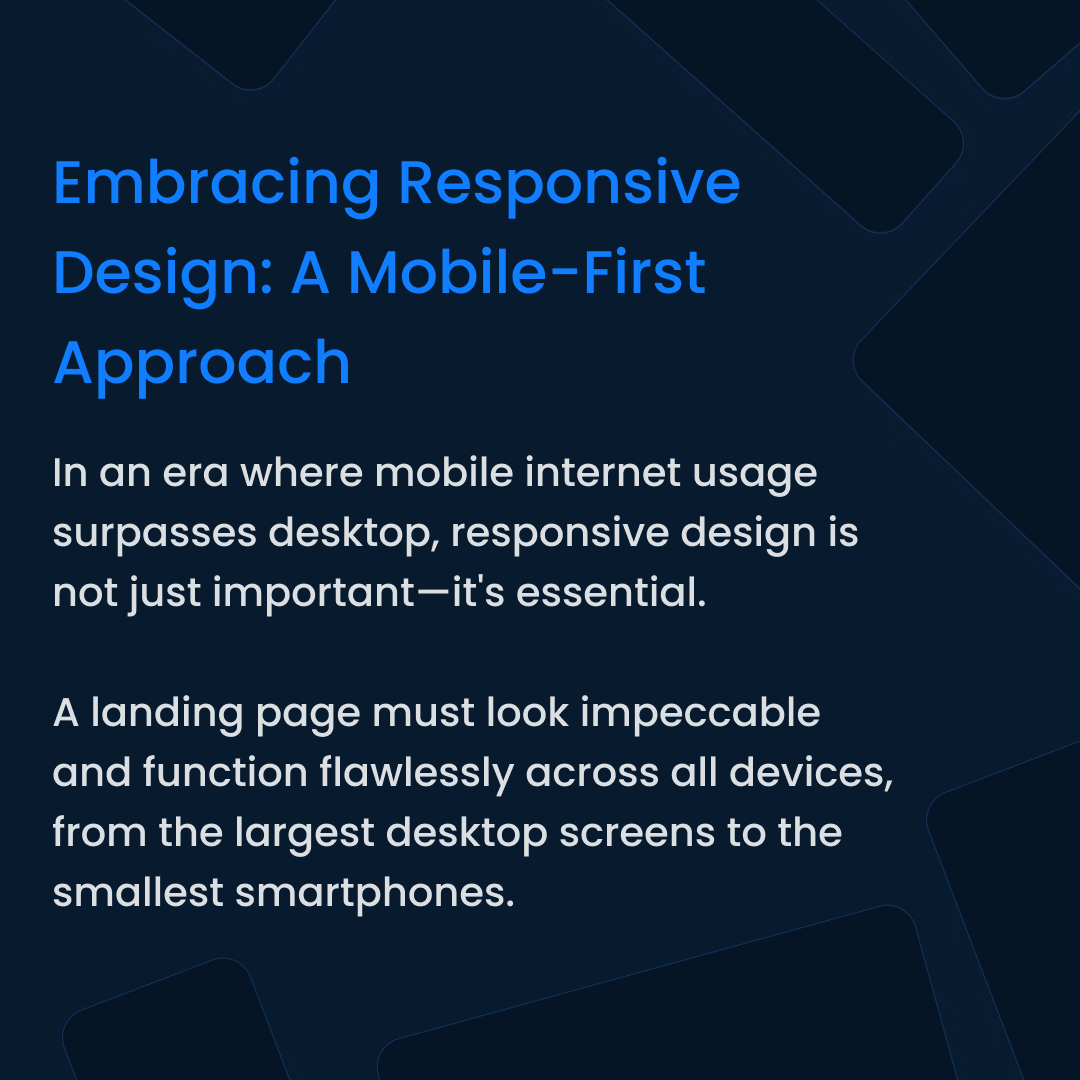
Starting with mobile design acknowledges the predominance of mobile users and prioritizes their experience from the outset.
By designing for smaller screens first, you ensure that the most essential elements are prioritized and presented in the most effective way possible, making the subsequent adaptation to larger screens more intuitive and impactful.
Consistency: The Cornerstone of User Experience
Just as a car with mismatched parts may deter buyers regardless of its performance, a landing page with inconsistent design elements can confuse and drive away potential customers.
Consistency in font families, button designs, and color schemes is not merely a matter of aesthetic appeal but a fundamental aspect of user experience.
It creates a sense of harmony and order that guides visitors through your content smoothly and predictably.
Consider the fonts: using too many different styles can fragment the user's attention and dilute the impact of your message.
Similarly, buttons with consistent design and placement across the page not only reinforce your brand identity but also make it easier for users to take the desired action.
And when it comes to color schemes, consistency helps to evoke the emotional response you aim for, be it trust, excitement, or curiosity.
This cohesive approach to design builds a visual and emotional connection with the user.
It makes the journey through your landing page not just a path to a goal but an enjoyable experience that leaves a lasting impression.
Like a well-tuned car that's as beautiful on the outside as it is reliable on the inside, a landing page with a consistent design promises quality and builds trust, inviting users to stay, explore, and ultimately, engage.
In crafting landing pages that resonate and convert, the devil is in the details.
By prioritizing key information, adopting a mobile-first approach to responsive design, and ensuring unwavering consistency across all design elements, you set the stage for a user experience that not only captivates but also convinces.
Wrapping It Up: The Cool New World of Landing Page Design
It's pretty clear that we're not just talking about making things look pretty anymore when it comes to landing page design.
Nope, it's all about getting smart with our designs, and let me tell you, the future looks absolutely exciting!
First off, AI is like having a super-smart assistant that doesn’t just do what it's told but actually comes up with awesome ideas to make everything look and work better.
From helping you whip up wireframes quicker to sprinkling some magic with those cool background patterns, AI tools are becoming the designer's new best friend.
And hey, they're not here to steal the show but to amp up our creative game.
And then there's the whole deal with making sure our landing pages play nice no matter what screen they're on.
Responsive design is the name of the game.
It's all about ensuring that whether someone's checking things out on their ginormous desktop screen or squinting at their phone at 2 AM, the experience is still top-notch.
